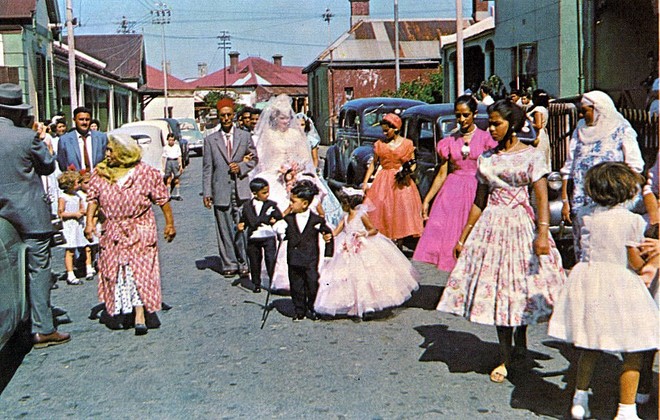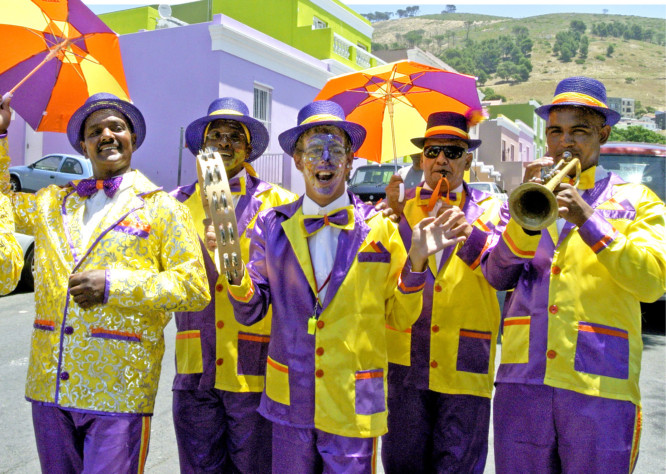People can be great sources of information. By speaking to people we can learn about the past. Learners are also sources of historical information.
A possible activity would be to have learners get into pairs and discuss what they did over the weekend. A few learners could share their stories. This is considered a historical source as it is representing a specific time and place in history.
Possible questions
What did you do over the weekend?
Do you think that what you told your friend can be thought of as history?
Do you think that if we write it down, we can call it a source?
We will investigate history using people as a SOURCE. This means one day you can also be a source for another history detective. People can be great sources of information. By speaking to people we can learn about the past. Learners are also sources of historical information. We will investigate an oral SOURCE to learn about the past.
Did you know that oral history can be songs, poems, fairy tale stories and someone’s life story?
Farida’s story about living in district 6
This story can be found at Rural Development.gov.za
My Name is Farieda Sirkhotte. I was born and raised in District Six, and anxiously awaiting my return to my beloved place of birth. I would like to share some of my most precious memories of the old District Six. And here they are…
It was an era where everything was beautiful. I remember the people, streets, houses, schools, mosques, churches, buildings, bioscopes, entertainment centres, and sports facilities. We had a variety of different shops owned by different nationalities of people. You did not have to go anywhere else to look for anything, everything was right there within your reach. All this was part of a closely knitted community.
The beautiful Table Mountain with its white table cloth was always there in the background watching over us. I can still visualise the smelly fish market (die vismarkie) in Hanover Street which was right opposite the Star bioscope. There were about 10 stalls in a row and the fish market was open every day and there were lots of different types of fish at every stall and there were always lots of people there.
The people of District 6 were very house proud, most the houses were always kept in a beautiful clean condition. We also did not have house phones, but we had a few public phone booths we could use. If somebody had a phone in their house they would have been considered as rich people. All my families were living in the surrounding areas which was great as I could go and visit them at any time.
7 Steps in Hanover Street
 Seven Steps in Hanover Street © District Six Museum / Africa Media Online
Seven Steps in Hanover Street © District Six Museum / Africa Media Online
My remembrance as growing up in D6 is sunshine and laughter. The sound of the muezzin, the chiming of the bells of the church even the snoek horns was like a cacophony of sound music to my ears with the backdrop of Table Mountain.As a child I played on the famous seven steps because I lived in that street. There were actually 2 times 7 steps, one at the bottom leading into Hanover Street and one on top leading into Caledon Street. The street was always packed with shoppers. Busses and cars flowed through Hanover Street. Going to bioscopes on a Saturday afternoon was one of the very famous activities because it also served as a meeting place for the youngsters.
Wedding in District 6: 1960
The rest of Saturday afternoons was for watching or participating in sport activities. Going to a party on a Saturday night was almost compulsory. We had lots of house parties and always with lots of adults watching over us, much to our annoyance. As little girls and then young ladies we watched the beautiful wedding parades practically every Sunday with horse drawn carts what a spectacle that was. We were not allowed to go to the concerts when famous overseas singers come to S.A. Our own local D6 singers will then imitate these famous visiting singers and we would then go to their concerts, and what great imitations they could do. These concerts were held in our Halls or bioscopes in D6.
 Wedding in district 6 1960 Image source
Wedding in district 6 1960 Image source
I had so many friends in those days and we would walk around without the fear of being hurt despite the fact that there were gangsters on almost every corner, in fact they looked out for us when “rival gangs” were seen on their turf. My life was very different back then, I was privileged to be a part of a community that was like an extension of my own family. Everybody looked out for each other and for each other’s children and the people were happy even though so many of us were poor, but u could always borrow a cup of sugar from someone. We accepted each other’s differences, in race colour, in religion and in culture.
District six was a melting pot of many cultures, smells, tastes, sights and sounds. I remember it all like it was yesterday. We played tennis on the tennis courts in Ravenscraig Road, and in the streets, we swam at the public swimming pools. We played table tennis and badminton at various places where social activities were held. We also played so many games outside in the streets and it was always safe to do this. We had libraries in D6 and we were very much involved in book reading and drawings.
 Klopse performing in Cape Town Image source
Klopse performing in Cape Town Image source
The most beautiful sights was over the festive seasons, it was like living in another world, the colourful display of the klopse and the atchaas Americans, as it was known, was a breath taking sight. It was almost compulsory to stay up throughout the night from New Years Eve until the next day to see the nag troepe walking the streets in their beautiful outfits. The streets were packed throughout the day and night with these varieties of troops of people and with spectators. The singing and songs of the klopse, the kaleidoscope of colours of the uniforms, the carnival atmosphere and the sounds of music everywhere, D6 was a hub of activity and these memories cannot be replaced.
My saddest moments are the constant reoccurring pictures in my inward eye of how the people of D6 were forcibly removed. There is the one picture that stands out for me and that is that the group areas act allocated a truck to each household, you need to pack up and leave then while the truck stands and wait for you , and take to your new place of residence of their choice. You had no choice but to leave if you don’t you are left in the cold without a home.Now that I am in my twilight years and God has thankfully given me a second chance in life, I want to focus all my energy to go back to where I belong and where I would like my family to belong. I want back what were once mine and that my families’.
Try to answer the following questions:
1. When do you think Farida grew up in District Six? Why do you think so?
2. What is a bioscope?
3.What cultural group do you think Farida is from?
4.What do you think about the government forcing people to move from their homes because of the Group Areas Act?
5.Do you think you would have liked living in District Six? Why?
6.What do you think was the best part about living in District Six?
7.Write down all the words from Farida’s story that you do not know, look up their meanings in your dictionary and write them down
What is your story?
Write your own story about living in your community. Use Farida’s Story as inspiration. You can also ask your family for help if you are unsure of what to include in your story.
Term 2: Learning from Leaders
What is Leadership? Anyone can be a leader. There are leaders everywhere around us: at home, at school, on television, on the sports field, in the community and in government. A leader is someone who guides people and sets a good example for everyone to follow.
Leadership is doing the right thing without being asked. It means being a good role model and standing up for other people, when it may be the hard thing to do. Leadership is a very important skill to learn in order to be the best person you can be and make the world a better place. Everyone has the opportunity to practice leadership every single day at school, at home or on the sports field.
What is a Good Leader?
There are many different examples of leaders in history, for example, Nelson Mandela, Martin Luther King and Mahatma Gandhi. These men were good leaders who fought for the equal rights for all people.
There are also examples of bad leaders, for example, Hitler. Hitler was responsible for the killing of millions of Jewish people.
A good leader needs to:
- listen to people;
- be a servant of the people and work for the good of others;
- work with a team;
- have courage and be brave;
- be dedicated and wholeheartedly committed to his or her beliefs;
- be dedicated and wholeheartedly committed to others;
- be prepared to sacrifice or give up something for the sake of others.
Types of Leaders
Anyone can be a leader, there is no age limit. Ordinary people can follow the example of good leaders. There are different types of leaders, with different leadership abilities. Below are some examples of leaders that we encounter everyday:
At home
Parents are leaders, as they look after the rest of the family.
At school
The Principal, teachers, prefects, and class captains are examples of leaders.
On the sports field
The coaches and captains are leaders.
Religion
The priest, rabbi, minister, etc are leaders.
Country
The president, the ministers, the mayor are all leaders. It is not always easy to be a good leader.
Leaders are not always popular and some people who hold different views to them, might dislike them. Leaders are also not always perfect. Everyone has their faults and leaders are not any different. Learning from Great Leaders Below is a list of some of the top 10 greatest leaders of all time